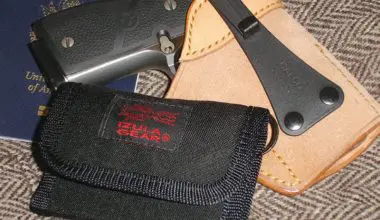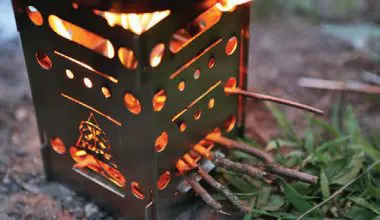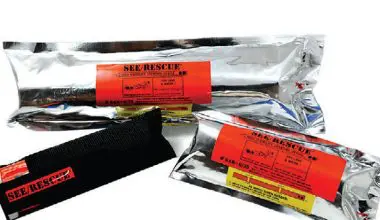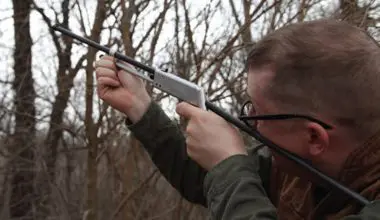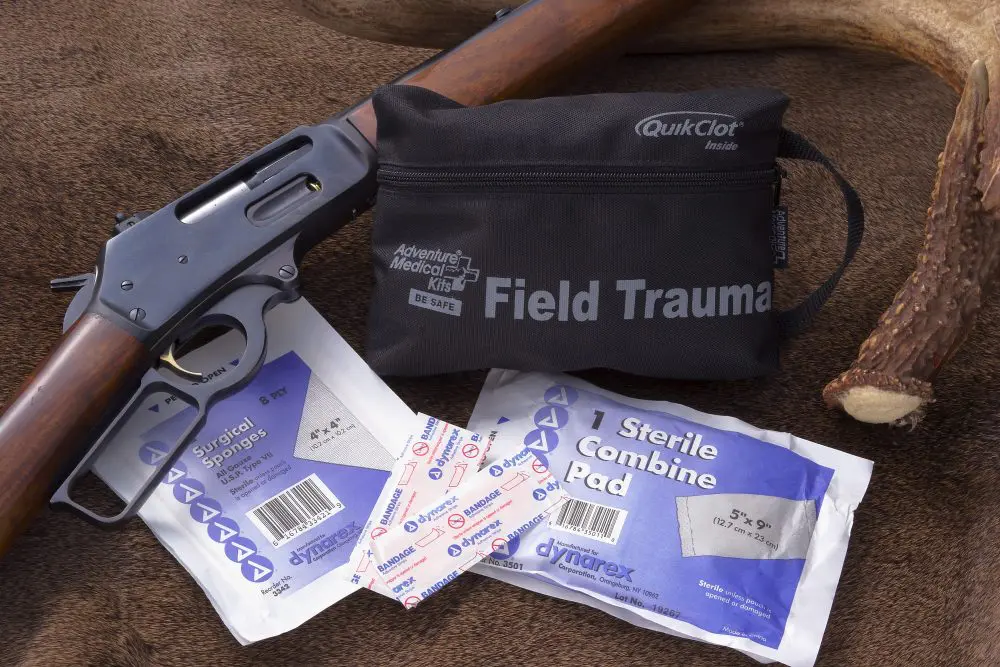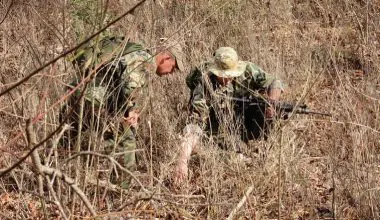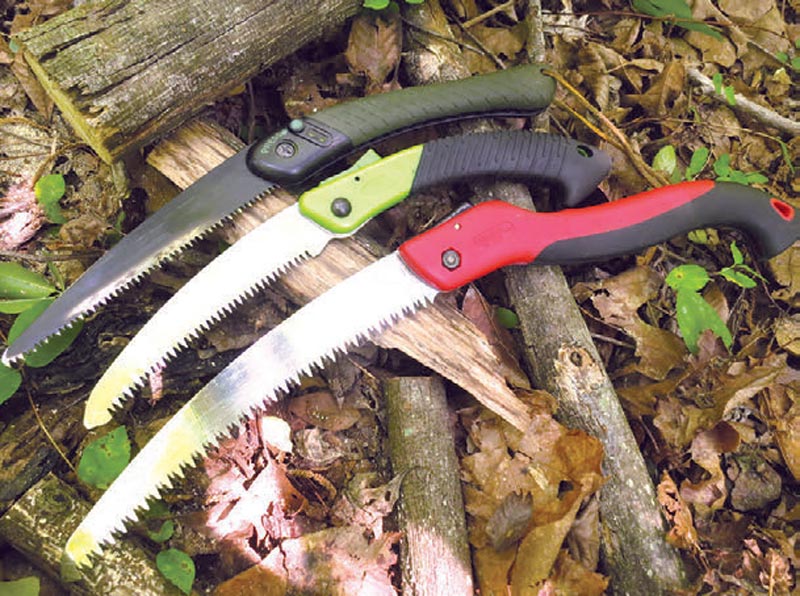
SOME people say multi-tools have no soul. We lack the desire to sit on the couch while watching TV and repeatedly deploy our needle-nose pliers, screwdrivers, bottle opener, and small blade (if it has one).
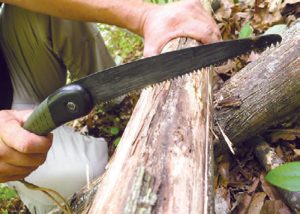
The same could be said about folding saws.
Multi-tools and folding saws just don’t have the cool factor that a folding knife or fixed blade does. But they are often the most practical tools for many tasks around the backyard or in a wilderness setting.
Most people who are bitten by the “survival bug” first get caught up in the romance of it all rather than the likelihood of it. Visions of chopping through the forest with machetes and axes or starting a fire instantly often dance in our heads. We gear up and set out to do battle with nature, often with two or three of everything, “just in case.”
Table of Contents
CALORIC TRADE-OFF
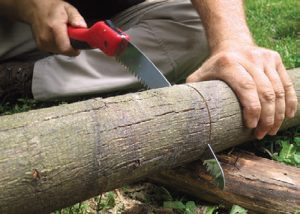
Constructing hunting blinds, shelters, fire, and general camp craft can be done in the “spirit of survival” with a large chopping tool, making a loud ruckus and thus giving ourselves away to wildlife— both two and four legged. I like to think of the saw as a stealthy cutter.
Chopping also requires a great expenditure of calories to accomplish the same results produced with the smooth, quiet motion of a saw. In a survival situation, we must always strive to produce greater results with fewer calories spent.
PROPER SAW USE
Used correctly, a saw will easily out-cut an axe or large chopping blade. A saw will not slice bread, split or chop wood, blaze a trail, or skin game, yet its attributes are just as rewarding.
When using a large chopping blade such as a machete or heavy knife,
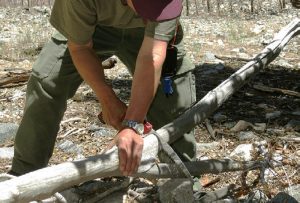
it’s possible to have a few bad swings that produce no results but waste energy. But with a saw, as long as the saw blade is in the cut, every pull counts and there is less wasted motion or risk of injury.
To use a saw correctly is to use a saw safely. When attempting to cut a downed log lying on the ground, first make sure it isn’t too large for the blade of the saw. When making the initial cut with the saw, place the blade where you want it and, with your free hand (left hand if you are right handed), place it on the right side of the saw blade and grip the log, crossing over your saw hand. This may seem a little awkward at first, but if and when the saw blade skips out while establishing the cut, it will only rub against your left inner forearm with the spine and be safe.
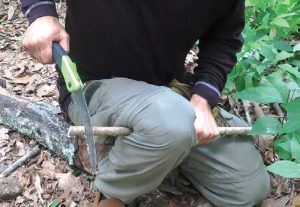
Most people place their free hand near the saw blade when making the initial cut. If the saw blade skips around while trying to establish itself in the log, it will leave an uneven gash on the knuckles of the free hand. I have seen more cuts on the hands of others and myself from saw teeth skipping around and landing on the knuckles than from a knife.
Use the cross-arm method until the top of the saw blade (spine) is deep in the wood, then adjust to the more natural comfortable grip with the free hand. You want a saw that shreds through wood, but getting cut in the process is counterproductive. Speed is of the essence, but safety is paramount.
Cutting branches hanging up off the ground (green or dry) can be done neatly by holding the branch safely and securely with the free hand and
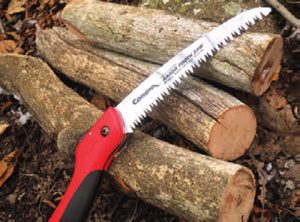
making a cut on the underside, maybe three to four strokes. Complete the sawing from the top and the branch will break cleanly, without the bark stripping off unevenly.
When sawing long branches that are not attached to a tree, use the knee method. Simply kneel with one knee on the ground and place the wood in the bend of the standing leg (right leg if right handed). This helps secure the wood, along with the free hand holding the other end.
Compared to swinging a machete, tomahawk, hatchet, big knife, or axe, using a saw is also safer to the people around us. Cutting overhead with a saw is safer than with a hatchet or machete. I read in a book on woodcraft that there are no minor injuries with a hatchet or axe. So for cutting branches up high, use the saw!
SAW-OFF
For the past year, I have used the same three saws to see how they fared against each other over time. Included was the seven-inch Bahco Laplander, which is considered the industry standard in the woodcraft world.
I also used the ten-inch Corona Razor Tooth Saw and a cheaper model I’d seen in a video saw-off online, a greenhandled seven-inch pruning saw from the Dollar General store that had almost no identifying marks or brands on it. In the video it kept up with some of the big names.
My results had the Bahco as king of the smaller-diameter pieces of wood due to its smaller teeth, which allowed for very smooth cutting.
The Dollar General saw did better than expected. The teeth are larger than the Bahco and the handle has a curve to it like all pruning saws, which gives it a fair amount of leverage.
The real wood shredder was the Corona Razor Tooth. The teeth are large and the blade is dramatically curved, along with the handle, which has more options for gripping and a very easy to see color. It’s big but worth the extra weight and bulk, especially when used in the winter for cutting firewood.
HONORABLE MENTIONS
My most-used saws are on my Swiss Army Knives (Hiker, Huntsman, and One-Handed Trekker). They are small and handy yet very sharp and effective on both green and dry wood. There is also a seven-inch blade version of the Corona Razor Tooth Saw that features the same ergonomics as its big brother but in a more compact size.
A saw cuts through wood very efficiently and usually fits in a cargo pocket. Due to the way saw blades are cut out, the spine is usually left fairly sharp and can be used to spark a ferrocerium rod. When paired with another tool for splitting and doing light to medium chopping, all the bases for heavier wood processing are covered.
In a survival or camp situation, the saw is the ultimate team player!
